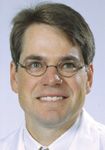- Acne
- Actinic Keratosis
- Aesthetics
- Alopecia
- Atopic Dermatitis
- Buy-and-Bill
- COVID-19
- Case-Based Roundtable
- Chronic Hand Eczema
- Chronic Spontaneous Urticaria
- Drug Watch
- Eczema
- General Dermatology
- Hidradenitis Suppurativa
- Melasma
- NP and PA
- Pediatric Dermatology
- Pigmentary Disorders
- Practice Management
- Precision Medicine and Biologics
- Prurigo Nodularis
- Psoriasis
- Psoriatic Arthritis
- Rare Disease
- Rosacea
- Skin Cancer
- Vitiligo
- Wound Care
Article
Leaving New Orleans: Two surgeons' decisions
National report ? For two Mohs surgeons formerly based in New Orleans, the decision to relocate after Hurricane Katrina rested upon factors such as work opportunities and long-term safety.

Seeking a silver lining
"I got laid off on Nov. 1, 2005," says Edward L. Parry, M.D., former professor of dermatology at Louisiana State University (LSU), where his entire practice was based.
"As a Mohs surgeon," Dr. Parry says, "all my instruments were in New Orleans, so there was no use for me to go to Baton Rouge" with the rest of LSU's dermatology department. "I tried to get back into New Orleans," he says, "but that's when hurricane Rita came. I found myself in a small town in Arkansas staying with friends" until it passed.
Dr. Parry says that before seeing to his own employment, he made sure his former LSU fellow, Steven Mason, M.D., was settled. Dr. Parry found him a position that allowed him to transfer his fellowship - working with Ida Orengo, M.D., at Baylor University.
"Another person who really came to bat and offered a position was Brett Coldiron, M.D., in Cincinnati," Dr. Parry says. As for himself, Dr. Parry joined the practice of a former fellow, Eric S. Hollabaugh, M.D., in Plano, Texas.
"If any state deserves a lot of credit for helping the people who were affected by Katrina, it's Texas, because I had a temporary license in three and a half hours" after arriving in mid-October, Dr. Parry says.
Since then, he's decided to apply for a permanent medical license there. "I'm very happy here in Plano," says Dr. Parry, who has a son practicing in the Dallas area (another, a Tulane medical school student, was in Houston at press time).
"Private practice is more lucrative than working in the university, although I miss the residents and my fellow," he explains. Ironically, Dr. Parry says he's now the student, learning the ropes of private practice from Dr. Hollabaugh.
"After 20 years of being a dermatologist," he adds, "this is my first exposure to being in private practice, and I really like it." In academic dermatology, Dr. Parry explains, "One's focus is on teaching. Here, it's much more on patient care."
Regarding New Orleans, he says he's only returned twice since the storm. "It's too sad - it's like if one had a house one had lived in a long time, then sold. One keeps going back and watching it deteriorate. I don't think I'm going back."
Choosing to leave
In contrast, Eric M. Finley, M.D., says, "I chose to leave the New Orleans area voluntarily on Jan. 13, 2006, as a direct result of the damage due to Katrina."
The top-floor dermatology clinic at the Ochsner Clinic Foundation where he worked sustained substantial roof damage, he explains, and the clinic would not be operational until Feb. 3. Moreover, Dr. Finley says the first floor of his uptown home had taken three to five feet of water that remained for nearly two weeks.
Newsletter
Like what you’re reading? Subscribe to Dermatology Times for weekly updates on therapies, innovations, and real-world practice tips.











